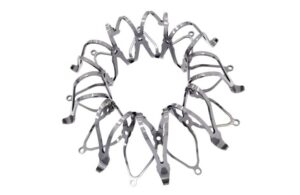
Corvia Medical announced today that it closed a $54 million equity financing from its existing investor syndicate.
Tewksbury, Massachusetts-based Corvia Medical earmarked the funds to support a confirmatory trial to build upon data and learnings from the clinical trial of its Corvia atrial shunt in heart failure patients with preserved (HFpEF) or mildly reduced HFmrEF ejection fraction.
Corvia’s atrial shunt is placed via catheter between the left and right atria to create a passage through which blood is allowed to flow from the high-pressure left atrium to the lower-pressure right atrium. potentially reducing HF symptoms and events and improving quality of life.
In April, Corvia published positive results from its global, phase III Reduce LAP-HF II randomized trial for the atrial shunt, having just two months prior reported that results from the same trial demonstrated that the atrial shunt device did not reduce heart failure rates or improve health status.
According to a news release, the Reduce-LAP-HF II trial is the largest randomized controlled trial of device-based therapy for HFpEF patients, with 626 patients randomized at 89 centers in the U.S., Canada, Europe, Australia and Japan.
Results showed that within a large responder population, representing 50% of study patients, treatment with the Corvia Atrial Shunt resulted in a 45% reduction in HF events and a 55% greater improvement in quality of life compared to sham control.
On the funds raised to support the Corvia atrial shunt, the company’s board chair Paul LaViolette said Corvia’s institutional and strategic investors “continue to believe in the benefits” of the therap and “feel strongly” that the offering could potentially change the way heart failure patients are treated.
“We are grateful to have the ongoing support of our investors as we continue the work to expand access to this novel therapy,” Corvia Medical CEO George Fazio said. “Corvia is dedicated to bringing atrial shunt therapy to the millions of heart failure patients who might benefit, and this funding allows us to continue advancing toward this important goal.”